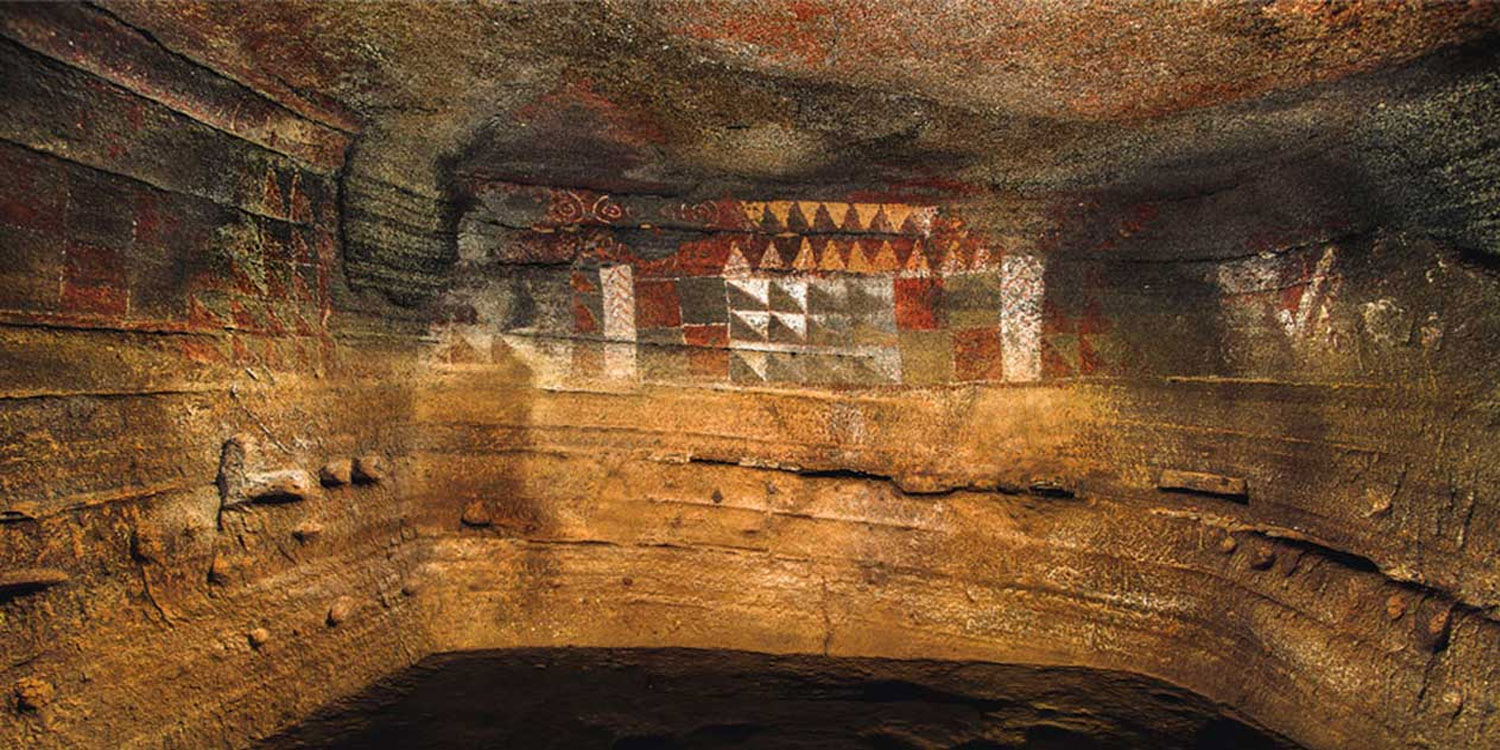He noted in its walls a series of geometric paintings and this circumstance gave rise to the popular name of Cueva Pintada, who made his fortune and name has lasted until today. Since then, the so - called Cueva Pintada became must - see for all scholars and researchers interested in the prehispanic past of the island.
In 1876, Chil and Naranjo included a brief mention of this event in their studies.
Meanwhile, in 1883 Diego Ripoche in El Liberal he provided details of great interest about the findings by noting in his writings: " ... and found inside some corpses, pots and other objects acquired some fans ‘.
Then in 1884 Olivia Stone visited the campus and insisted that the monument is taken by the City Council to proceed to clean and allow public access.
In 1887 he was the French anthropologist René Verneau who visited the camera and gave a detailed description in which it noted the uniqueness and careful execution of each of the polychrome panels.
It is fair to say that since the late nineteenth century there was an early awareness of certain sectors of society that raised their voices to emphasize the extraordinary significance of this finding and defend their conservation. Thus, the chronicler Batllori and Lorenzo, through the columns of the magazine El Museo Canario, launched a desperate call for the protection of the Painted Cave under the lapidary title My last attempt. The "Cueva Pintada”.
Throughout the twentieth century continued criticism of the institutional laziness, but especially since 1967 when a press campaign was launched for the recovery of this enclave, especially in the hands of historians as Celso Martin Guzman and Elijah Serra Rafols.
Faced with the progressive deterioration of the paintings, the Commissioner General of Archaeological Excavations launched in 1970 the works of protection and isolation of the humilities that were affecting the drawings. The clean-up and debris removal that uncovered a group of caves, surrounding the decorated chamber, formed a unique set thus initiated.
The scant information then had the type of prehispanic villages, coupled with the lack of foresight and no reaction to the findings that were produced during the work, led to the destruction of an important part of this complex, which could only be retrieved few material remains thanks to some neighbours who rescued from the rubble.
This intervention was complemented by the construction of an architectural closure intended to protect the cave and ultimately open to the public. In 1972 she was declared Monument Historical Site.
An Antonio Beltrán and José Miguel Alzola the first systematic research work on the whole, published in 1974. This study included the first colour photos and drawings the most accurate to date is due, no doubt contributing to the spread of the deposit between the specialists.
The first signs of deterioration of the paintings were seen just eight years after opening to the public in 1972. The irrigated farm environment, inadequate closure and the lack of architectural planning visits caused excessive humidity and increased the temperature inside the chamber.
Despite some reforms that improved the ventilation of the room, the biggest problem was still ongoing irrigation water seepage and aggression of chemical fertilizers dissolved in it. It was decided to begin the process of expropriation of farms adjacent to withdraw crops. This combination of circumstances forced to take the decision to close the cave to the public in October 1982. It was then that he decided to start a research project that would reopen the Cueva Pintada the public, but this time en







